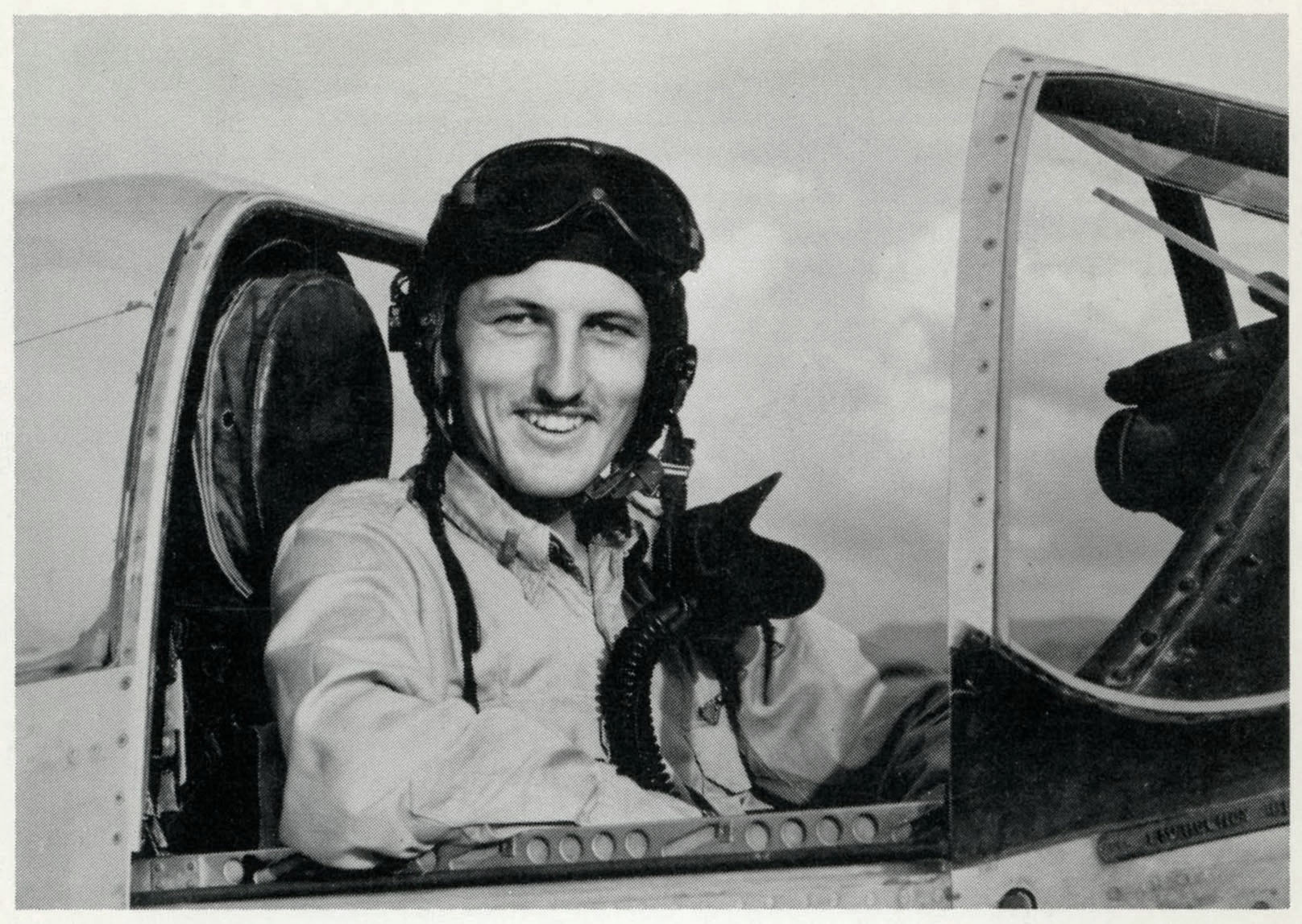William W. Wyper’s The Youngest Tigers in the Sky is rather unusual in terms of the book’s cover illustration, for the artist is none other than the author – William Wyper – himself.
Appropriately, the cover depicts a pair of of P-51D Mustangs bearing the markings of Wyper’s unit – the 342nd Fighter Squadron of the 348th Fighter Group – which comprised red and white rudder stripes adjacent to a blue vertical band upon the aircraft’s fin. Similarly, I think (?) that the blue spinners may be another form of squadron identification.
The book includes a number of small black and white pen and ink (?) drawings of aircraft and vignettes based on events during Wyper’s pilot training and combat missions. While not shown in “this” post, these illustrations add an appropriately “light” touch to the book.
Oh, yes, as to the book itself?
I enjoyed it, particularly in terms of how the content is divided – about half-‘n-half – between accounts of Wyper’s training in the United States, and, his actual combat service. The text, written in a straightforward and direct style, maintains a very nice balance in covering the substantive, serious, and sometimes tragic aspects of combat flying, and equally, the sometimes ironic, odd, memorable, and (yes) occasionally humorous experiences inherent in military aviation. And, in terms of aviation history, the book is valuable by its very nature in covering an aspect of WW II aviation history entirely other than 8th Air Force and European Theater.
In a literary sense, the book does not have the deeply philosophical and pensive nature of such a work as John Boeman’s Morotai, but this not to its disadvantage, for I think Wyper’s intention was entirely different: To tell the story of how one became military pilot, during an era that by now – almost eight decades later, in 2021 – is largely receding from public memory. (At least, in the United States.) In this, the book entirely succeeds. I do note, however, that for all those pilots who were killed in training or on combat missions, Wyper eschews mentioning their names, perhaps a measure of respecting confidentiality and privacy even decades after the war’s end.
My one criticism – and this is actually an indirect compliment – is the book’s paucity of photographs. (!) Other than the two images shown below (and another, showing the author at the controls of his Beechcraft Bonanza in the 1970s), there just ain’t no other pictures! I would liked to have seen more.
I think you’ll enjoy this one.
________________________________________
“Another axiom regarding war in the air: the sky has always been the exclusive battle area of the young. Unfortunately, all of the young men who struggled for the chance to do battle weren’t afforded the opportunity to become great aces, but they were no less tigers. Some were killed during their struggle to become tigers. Others were killed, not by the enemy, but by their own inability to master the unforgiving demands of their specialized profession. This book is a reminiscence of experiences of one of those once-young tigers in the sky. It is dedicated to all of the young men who fought in the skies, especially those who never lived to reminisce.”
Wyper’s cover art…
__________
The author standing before a P-40N Warhawk. The location would be either Eagle Pass, Texas, or Fort Sumner, New Mexico.
The author in the cockpit of a P-51D Mustang of the 342nd Fighter Squadron.
A little searching at Ancestry.com yielded William Wyper’s Draft Registration Card. Note that Wyper was employed at the Douglas Aircraft Corporation in Long Beach, California.
Green, William, Famous Fighters of the Second World War, Hanover House, New York, N.Y., 1958
Rust, Kenn C., Fifth Air Force Story, Historical Aviation Album, Temple City, Ca., 1973
Ward, Richard, and Shores, Christopher F., Curtiss P-40D-N Warhawk in USAAF – French and Foreign Service, Arco Publishing Company, New York, N.Y., 1969




